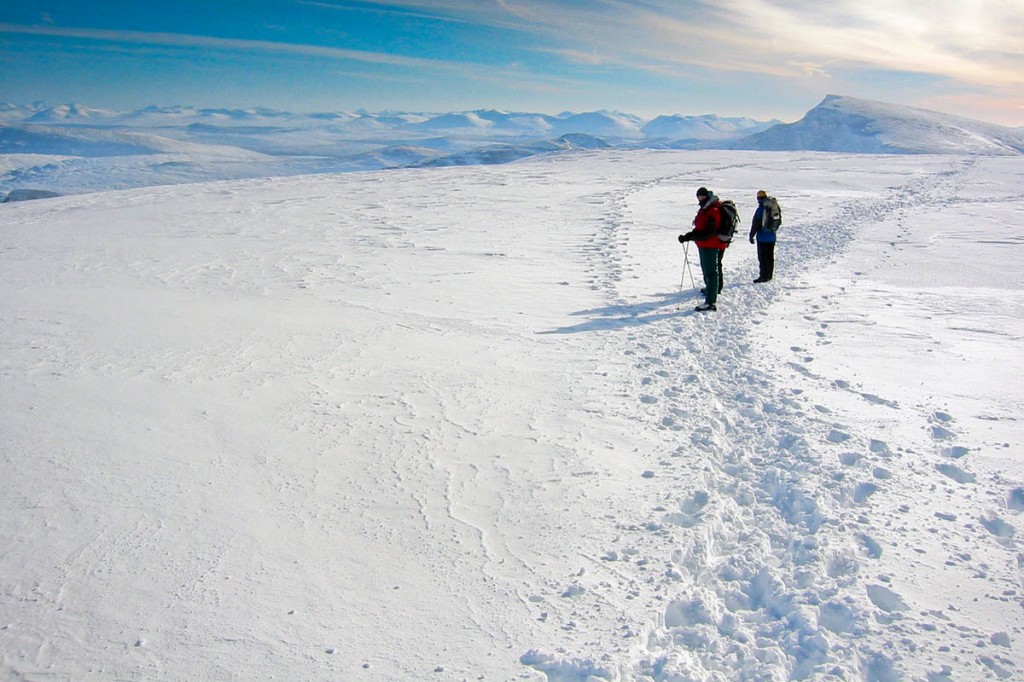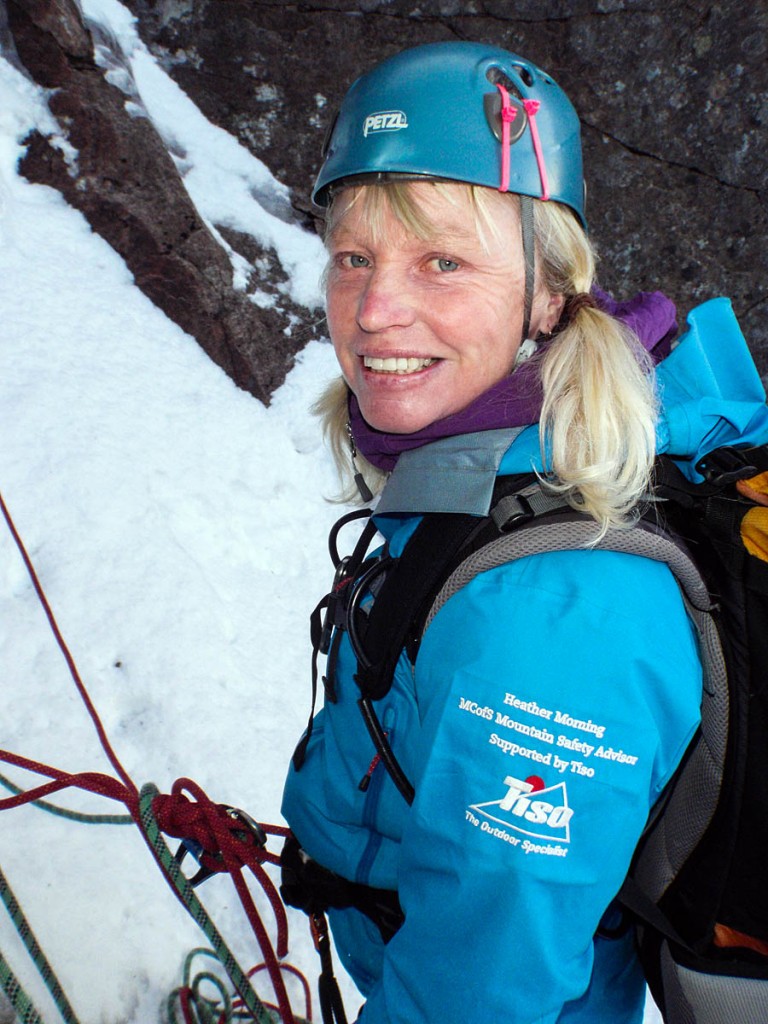
Hillgoers need to be prepared for winter conditions on Scotland's mountains. Photo: Bob Smith/grough
Shorter daylight hours, dropping temperatures and the arrival of snow on the hills mean one thing: it’s time to gear yourself up for winter.
Mountain expert Heather Morning said even experienced hillgoers can come unstuck in winter conditions on Scotland’s mountains.
Mountaineering Scotland, formerly the Mountaineering Council of Scotland, said an examination of the fatal accident statistics for the last year shows it isn’t just novices getting into difficulties.
Sadly, it said, 20 people have lost their lives so far in the mountains this year. 10 of these were either approaching, or on, a technical climb. Three died as a result of avalanche; three of the others who died had spent a lifetime enjoying the hills.
Anyone heading out to the hills needs to pause, think and prepare for the challenges that face all who take to the mountains in winter, it said.
Heather Morning, mountain safety adviser with Mountaineering Scotland said: “Shorter daylight hours, dropping temperatures and the first snow on the hill are all good indicators that it is time to think about extra kit in your rucksack.
“Routes will take longer than expected in winter conditions and many people will end up finishing in the dark, so a headtorch – and spare batteries – is crucial. In fact better still is to carry a spare headtorch, as anyone who has tried to change batteries in the cold and dark will testify.
“If you are heading out on the higher tops, now is the time to add crampons, rigid boots to accommodate them, an ice-axe and spare essentials such as hats and winter gloves to your essential kit list.”
With temperatures at 1,000m at least 10C lower than sea level at this time of year – and feeling even lower through the effect of any wind chill – many underestimate how quickly they can feel the cold, which can turn to hypothermia within less than an hour, Mountaineering Scotland said.
Extra layers are essential, such as a synthetic duvet jacket, and an emergency bivvy bag stored in the bottom of a rucksack is highly recommended, just in case you have to be stationary on the hill for any length of time.
Those who head to the hills with friends or as part of a group are advised to invest in a lightweight, nylon group shelter. This can provide a snug spot for lunch if the weather is poor and a vital refuge if someone in a group is injured and they have to wait for help to arrive.
The organisation said the Scottish mountains are a winter playground for thousands of hillwalkers, climbers and mountaineers, with a wide range of experience levels.
Every winter Mountaineering Scotland reaches out to the wider mountaineering community, teaming up with outdoor shops across the country to offer a series of free winter mountain-skills talks. 11 talks are held at venues from Inverness to Edinburgh, designed to give a taster of essential skills for novices and a refresher for seasoned mountaineers.
Ms Morning said: “We find that an effective way to get the message out to less experienced mountain lovers or those who want to progress from summer hillwalking to winter mountaineering, is to reach them through our free talks.
“Dealing with winter conditions and avalanche avoidance isn’t just a case of buying all the right gear; the right knowledge and experience is crucial.”
Mountaineering Scotland also runs a number of subsidised winter mountain skills training courses, and provides further guidance and skills videos, together with details of free talks, on its website.
The website has just been relaunched after a redesign following the change of name to Mountaineering Scotland.
The new website also features the organisation’s new logo, based on the mountain outline of Buachaille Etive Mòr, the peak that greets visitors to Glen Coe. It was the winning entry in a design competition held this summer, which was open to Mountaineering Scotland members and the general public.
The website and logo are the culmination of a rebrand to Mountaineering Scotland from Mountaineering Council of Scotland that began in the spring after consultation with members.
Mountaineering Scotland chief executive David Gibson said the organisation, based in Perth and at Glenmore Lodge, plans to grow its 13,000 membership and reach out to all those who enjoy hillwalking and climbing on Scotland’s hills and at climbing walls.
“Indoor climbing is one of the nation’s fastest growing sports and is set to become even more popular as it becomes an Olympic sport for the first time in 2020,” he said. “Passion for the Scottish mountains is at an equal high and we want to encourage even more people to give hillwalking a try as part of an active lifestyle.
“Our new identity is all part of our plans to do this.”
The new website has comprehensive and authoritative guidance for mountain safety and skills from navigation tips to weather and avalanche advice.
Hill-goers can also find an up-to-date directory of Scotland’s mountaineering and climbing clubs or join Mountaineering Scotland directly as an individual member.
Along with the new website, Mountaineering Scotland’s emails have also changed, and now follow the pattern of first name followed by @mountaineering.scot.


Margaret
22 November 2016"...we want to encourage even more people to give hillwalking a try as part of an active lifestyle..."
Just how is this to be balanced with the increasing workload of Voluntary Rescue Teams?